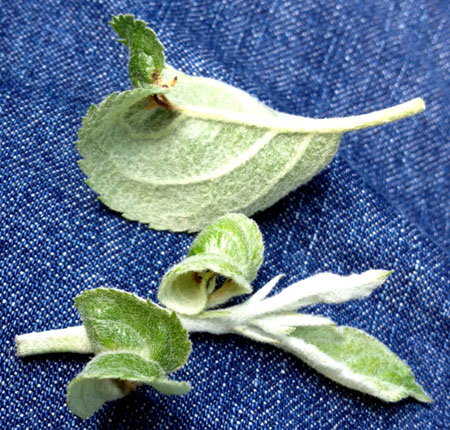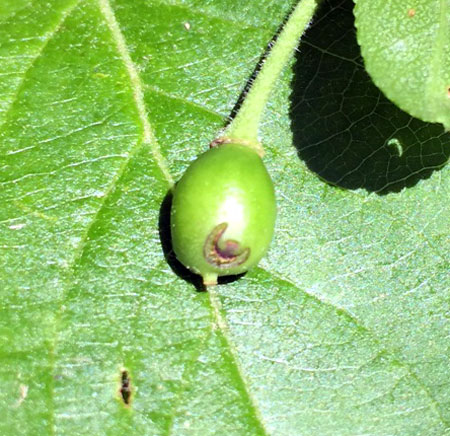West Michigan tree fruit regional report – June 3, 2014
Bring on the heat and watch fruit grow.

Crop update
Daily temperatures have been average to much above average with less than normal rainfall amounts. Warm, sunny and dry weather during bloom led to great pollinating and fertilization conditions for apples. It’s too early to make cropping predictions, but everything has been right so far this spring to set a great apple crop. Some varieties are light due to lack of return bloom, but the overall crop appears to be similar to 2013.
Sweet cherries are setting lighter than expected, most likely due to the cool and wet weather during bloom and possibly some winter injury to buds. There is a lot of variability from variety to variety, but still a decent crop overall.
Apple thinning will be the biggest task to accomplish over the next week or so. The weather conditions have been great for thinners to work. The carbohydrate model has indicated average levels for tree stress, so normal thinning rates should be considered. There is a cool pattern moving in for later in the week that could reduce stress and reduce thinner effectiveness.
Tree fruit diseases
Primary apple scab spores are declining and we should be near to 100 percent mature spores. Now, we will need one or two rain events to release all mature spores. Primary scab is still on for 2014 and it’s too early to begin reducing fungicide rates for the Ridge and Belding, Michigan, areas as well as areas farther north. Scab can be found in light amounts in commercial apples and now is the time to scout very closely for primary scab that might have got through your fungicide program before you reduce rates.
For the general Grand Rapids, Michigan, apple production areas, bloom is over except for a few rag tag blooms and bloom on newly planted trees. In areas farther north, late bloom is still present. The risk for fire blight blossom blight on any blocks with significant – more than 10 percent – bloom left is very high for the next few days with rain predicted. Open, viable bloom needs to be protected for potential blossom blight.
Earlier blossom infections could be showing up any day now as could oozing of old cankers, so keep a close eye on any possible weather situations that could lead to trauma blight; hail and high winds that rip or tear foliage in any way give an entry to fire blight.
Some years, blister spot can be a problem on a few varieties of apples – Mutsu, Fuji and Jonagold most commonly. Blister spot is caused by the bacterium Pseudomonas syringae pv. papulans. I have seen evidence of the blister spot infections of leaves already in some orchards, and I think it is associated with some cold injury from a few weeks ago (see picture below).

Blister spot infections on leaves. Photo credit: Ben Brown
Blister spot is probably present in most apple orchards. Just seeing the disease on leaves does not necessarily mean fruit will be infected. The fruit are only susceptible for about four weeks after bloom and only if the weather conditions are right – extended wet weather in late May and early June. Small, sunken lesions can form on fruits reducing marketability. It’s been on the dry side, but the forecast has a few days of rain predicted that might cause blister spot infections to get started. It does seem unlikely that we will get the extended wetting events needed to promote high levels of infection on fruits. However, high value varieties such as Fuji and Jonagold can be protected somewhat with streptomycin or some phosphite materials to help prevent this possible disease expression. Many cultivars including Golden Delicious, Red Delicious, Jonagold and Cortland are susceptible to this disease, but Mutsu (Crispin) and Fuji are very susceptible.
Tree fruit insects
Oriental fruit moth cover sprays are now needed in stone fruits to prevent flagging of shoots from first generation. Codling moth flight began in earnest a week ago with high numbers in some areas. Michigan State University Extension advises that early applications of egg targeting sprays need to go on right away. Materials that target early egg hatch will be needed by the end of the week.
Plum curculio activity has started in plums and sweet cherries. With the warmer weather, especially the warm nights recently, plum curculio will become active in apples as well. Cooler weather later in the week might slow them down, but careful scouting and good petal fall sprays are needed very soon for most tree fruits.

This picture was taken Friday, May 30, 2014 in unsprayed plums. The damage is very recent and fresh. Photo credit: Amy Irish-Brown, MSU Extension
Meeting announcements
There will be a thinning meeting on the Ridge on Wednesday, June 4, from 9-11 a.m. The host farms will be Riveridge and Steve Reister’s Farm. We will meet between the two sites located where 8th Avenue T’s into Coolidge in Ottawa County. The address is approximately 20890 8th Ave, Conklin, MI 49403. There will be thinning discussion as well as crop load management techniques to see including various pruning levels and bloom thinning.



 Print
Print Email
Email


